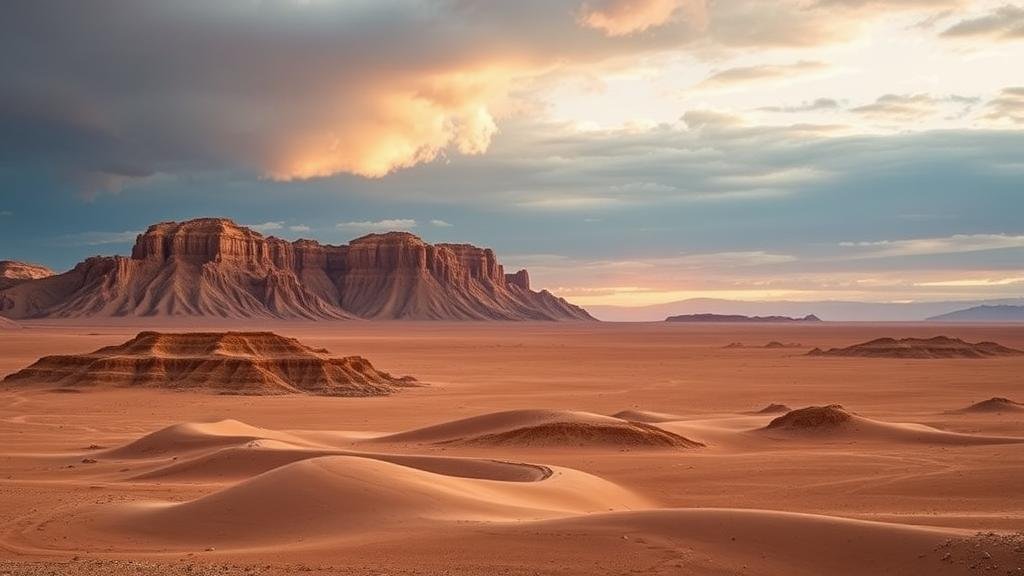Exploring the vast badlands of Mongolia’s Gobi Desert.
Exploring the Vast Badlands of Mongolia’s Gobi Desert
The Gobi Desert, one of the largest and least explored deserts in the world, spans across northern China and southern Mongolia. Covering over 1.3 million square kilometers, this harsh landscape is characterized by its varied terrain, unique ecosystems, and rich history. In this article, we will delve into the geographical features, historical significance, and the biodiversity of this vast desert.
Geographical Features
The Gobi Desert is not a typical sandy desert; it boasts a diverse range of landscapes, including gobi (stony plains) and high mountain ranges. desert reaches elevations up to 2,000 meters (6,600 feet) in some areas, with the Altai Mountains to the west contributing to its rugged topography.
One of the most remarkable features of the Gobi is its extreme climate. Temperatures can plunge to -40 degrees Celsius (-40 degrees Fahrenheit) during the harsh winters and soar to over 40 degrees Celsius (104 degrees Fahrenheit) in the summer. These extreme conditions make the Gobi a challenging environment for both flora and fauna.
Historical Significance
The Gobi Desert has been a critical area for trade and civilization for centuries. It served as a vital segment of the ancient Silk Road, facilitating trade between the East and the West. Merchants ventured across these arid lands, transporting goods such as silk, spices, and precious stones. Beijing and Istanbul were linked through this desert route, enhancing cultural exchange.
In the early 20th century, the Gobi gained international attention during the expeditions of paleontologist Roy Chapman Andrews. His work in the 1920s uncovered significant dinosaur fossils including the famous Protoceratops, expanding the scientific understanding of prehistoric life in the region.
Biodiversity in the Desert
Despite its harsh conditions, the Gobi Desert is home to several unique species of plants and animals. Approximately 300 species of birds inhabit the area, including the endangered Siberian crane and the graceful bustard. Several mammals also thrive here, such as:
- The elusive snow leopard, known for its adaptability in harsh conditions.
- The Gobi bear, one of the rarest bears in the world, with an estimated population of only 30 individuals.
- The wild Bactrian camel, capable of surviving without water for extended periods.
These species have adapted remarkable strategies for survival, such as nocturnal behavior to avoid extreme daytime temperatures.
Adventure and Exploration
The Gobi Desert offers numerous opportunities for adventure seekers. Travelers can engage in activities like camel treks, sandboarding, and exploring the mesmerizing dunes of Khongoryn Els. The Flaming Cliffs, known for their reddish-orange hue at sunset, are another must-visit spot, especially for those interested in paleontology.
Modern infrastructure has made accessing the Gobi easier. Ulaanbaatar, the capital of Mongolia, serves as the primary gateway, with tour operators offering guided trips into the desert. e tours often include visits to traditional nomadic herder families, providing insights into their age-old ways of life.
Conservation Efforts
Recognizing the ecological significance of the Gobi, various conservation initiatives have been launched, aimed at preserving its unique biodiversity. Organizations like the World Wildlife Fund (WWF) are actively working to protect the Gobi bear and other endangered species. Efforts include habitat restoration and community education programs to promote sustainable practices among nomadic herders.
Plus, the establishment of protected areas, such as the Gobi Gurvansaikhan National Park, plays a vital role in preserving the delicate ecosystems of the desert.
Actionable Takeaways
For those considering a trip to the Gobi Desert, preparation is key:
- Plan your visit during spring or autumn when the temperatures are milder.
- Invest in appropriate gear to handle the extreme temperature variations.
- Engage with local tour guides to ensure a knowledgeable and responsible exploration of the desert.
The vast badlands of Mongolia’s Gobi Desert offer a blend of adventure, history, and ecological wonder. By understanding and appreciating its unique characteristics, visitors can gain a deeper insight into one of the world’s last great wilderness areas.



